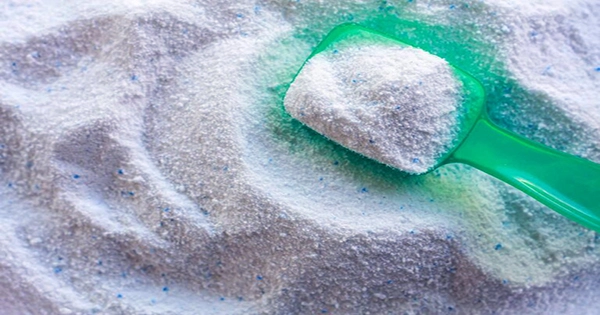A surfactant is a chemical compound that reduces the surface tension between two liquids or between a liquid and a solid. In soaps and detergents, surfactants are the active ingredients that provide cleaning properties. They work by breaking down and removing grease, oils, and dirt by emulsifying them into smaller droplets that can be easily washed away.
Surfactants have a hydrophobic (water-repelling) tail and a hydrophilic (water-attracting) head, allowing them to effectively interact with both water and oils. When mixed with water, they form micelles, which are tiny spherical structures with hydrophobic tails pointing inward and hydrophilic heads pointing outward. These micelles help to trap and remove oils, dirt, and other contaminants from surfaces.
Different types of surfactants are used in soaps and detergents, depending on their intended use and properties. For example, anionic surfactants have a negatively charged head and are typically used in household cleaners, while cationic surfactants have a positively charged head and are used in fabric softeners and disinfectants. Nonionic surfactants have neutral heads and are often used in personal care products, such as shampoos and body washes.
Soaps: Soap is a cleaning product made from the reaction of a strong alkali (such as sodium hydroxide or potassium hydroxide) with a fatty acid (such as animal fat or vegetable oil). The resulting compound, called soap, has a polar “head” and a nonpolar “tail,” which allows it to effectively remove dirt and oils from surfaces. Soaps are commonly used for personal hygiene, as well as for cleaning household items and laundry.
There are several types of soap, including bar soap, liquid soap, and shower gel. Bar soap is a solid soap that is usually molded into a bar shape. Liquid soap is a water-based solution that is dispensed as a liquid and used with a washcloth or sponge. The shower gel is a type of liquid soap that is designed specifically for use in the shower.
Soap can be formulated with various ingredients to provide different benefits, such as moisturizing, exfoliating, and fragrancing. Some soaps are also medicated to treat skin conditions, such as acne or eczema.
Manufacturing Process of Soap: The manufacturing process of soap typically involves several steps:
- Saponification: The first step is to make the soap base, which is done through a chemical reaction between a strong alkali (such as sodium hydroxide) and a fatty acid (such as animal fat or vegetable oil). This reaction is called saponification and results in the formation of soap molecules.
- Mixing and refining: After saponification, the soap mixture is mixed and refined to remove any impurities. This step may involve the addition of fragrances, colorants, and other ingredients.
- Molding: The soap mixture is then poured into molds and allowed to cool and solidify. Once the soap has hardened, it is removed from the molds and cut into the desired shape (such as a bar or a liquid).
- Drying and curing: The soap is then allowed to dry and cure for several weeks. During this time, the soap continues to harden and the excess water evaporates, resulting in a firmer, longer-lasting product.
- Packaging: The final step is to package the soap for distribution and sale. Bar soap is usually packaged in cardboard boxes or wrapped in plastic, while liquid soap is packaged in squeeze bottles or pumps.
Note: The exact manufacturing process may vary depending on the type of soap being made and the desired final product. For example, the process of making liquid soap is different from the process of making bar soap.
Saponification: Saponification is a chemical reaction between a strong alkali (such as sodium hydroxide or potassium hydroxide) and a fatty acid (such as animal fat or vegetable oil) to produce soap. The process typically involves heating the alkali and fatty acid together until saponification is complete.
In the saponification reaction, the alkali reacts with the fatty acid to form a salt, or soap, and glycerol. The soap produced in this reaction has a polar “head” and a nonpolar “tail,” which allows it to effectively remove dirt and oils from surfaces.
The outcome of the saponification reaction can be adjusted by varying the type and ratio of fatty acid to alkali used. This allows for the production of soaps with different properties, such as different levels of lather, moisturization, and cleaning power.
Saponification is an important step in the manufacture of soap and is used to make a variety of products, including bar soap, liquid soap, and soap-based detergents.
Neutralization: Neutralization is a chemical reaction between an acid and a base to produce a salt and water. The reaction is characterized by the neutralization of the acidic and basic properties of the reactants, resulting in a neutral solution. The pH of the neutral solution is typically close to 7, which is considered neutral on the pH scale.
In soap-making, neutralization refers to the process of balancing the pH of the soap mixture after the saponification reaction has taken place. This is important because an excess of alkali in the soap mixture can cause skin irritation and other problems. Neutralization helps to ensure that the soap is safe and effective for use.
The neutralization process typically involves the addition of an acid, such as citric acid or acetic acid, to the soap mixture. The acid reacts with the excess alkali to produce salt and water, bringing the pH of the mixture to a neutral level.
Note: The exact neutralization process may vary depending on the type of soap being made and the desired final product. The amount of acid added and the specific neutralization method used will depend on factors such as the type and concentration of the alkali used, the type of fatty acid used, and the desired properties of the final soap product.
Detergents: Detergents are cleaning agents that are used for cleaning a variety of surfaces, including clothing, dishes, and surfaces in the home. They are similar to soaps but are typically formulated to be more effective at removing grease and oil.
Detergents are made from a combination of surfactants, which are compounds that help to reduce the surface tension of water and allow it to remove dirt and oils from surfaces. Other ingredients, such as builders, enzymes, and fragrances, may also be added to detergents to provide additional cleaning power, remove stains, and improve the smell of the product.
There are several types of detergents, including laundry detergents, dishwashing detergents, and all-purpose cleaners. Laundry detergents are formulated to remove dirt and stains from clothing and are available in both liquid and powder form. Dishwashing detergents are formulated to remove food and grease from dishes and are available in liquid, powder, and tablet form. All-purpose cleaners are formulated to clean a variety of surfaces, including countertops, floors, and bathrooms.
Detergents can be formulated with different ingredients to provide different benefits, such as anti-bacterial action, anti-static properties, and moisturization. Some detergents are also formulated to be more environmentally friendly and biodegradable.
Manufacturing of Detergents: The manufacturing process of detergents typically involves several steps:
- Raw material preparation: The first step is to prepare the raw materials, including surfactants, builders, enzymes, and fragrances. The raw materials are typically stored in separate tanks or silos until they are ready to be used.
- Mixing: The raw materials are then mixed together in large vats to form the detergent mixture. The mixture is heated and agitated to ensure that all of the ingredients are evenly distributed.
- Refining: After mixing, the detergent mixture is refined to remove any impurities and improve its performance. This step may involve the addition of further ingredients or the adjustment of the pH.
- Molding: The detergent mixture is then poured into molds and allowed to cool and solidify. Once the detergent has hardened, it is removed from the molds and cut into the desired shape (such as a bar, powder, or liquid).
- Drying: The detergent is then dried to remove any excess moisture. This step may be done in a centrifuge or by exposing the detergent to heat or air.
- Packaging: The final step is to package the detergent for distribution and sale. Detergents are typically packaged in boxes or bottles, and the packaging may also include labeling and instructions for use.
Note: The exact manufacturing process may vary depending on the type of detergent being made and the desired final product. The process of making liquid detergents is different from the process of making bar or powder detergents. The manufacturing process may also vary depending on the specific ingredients and the desired performance characteristics of the final product.
















